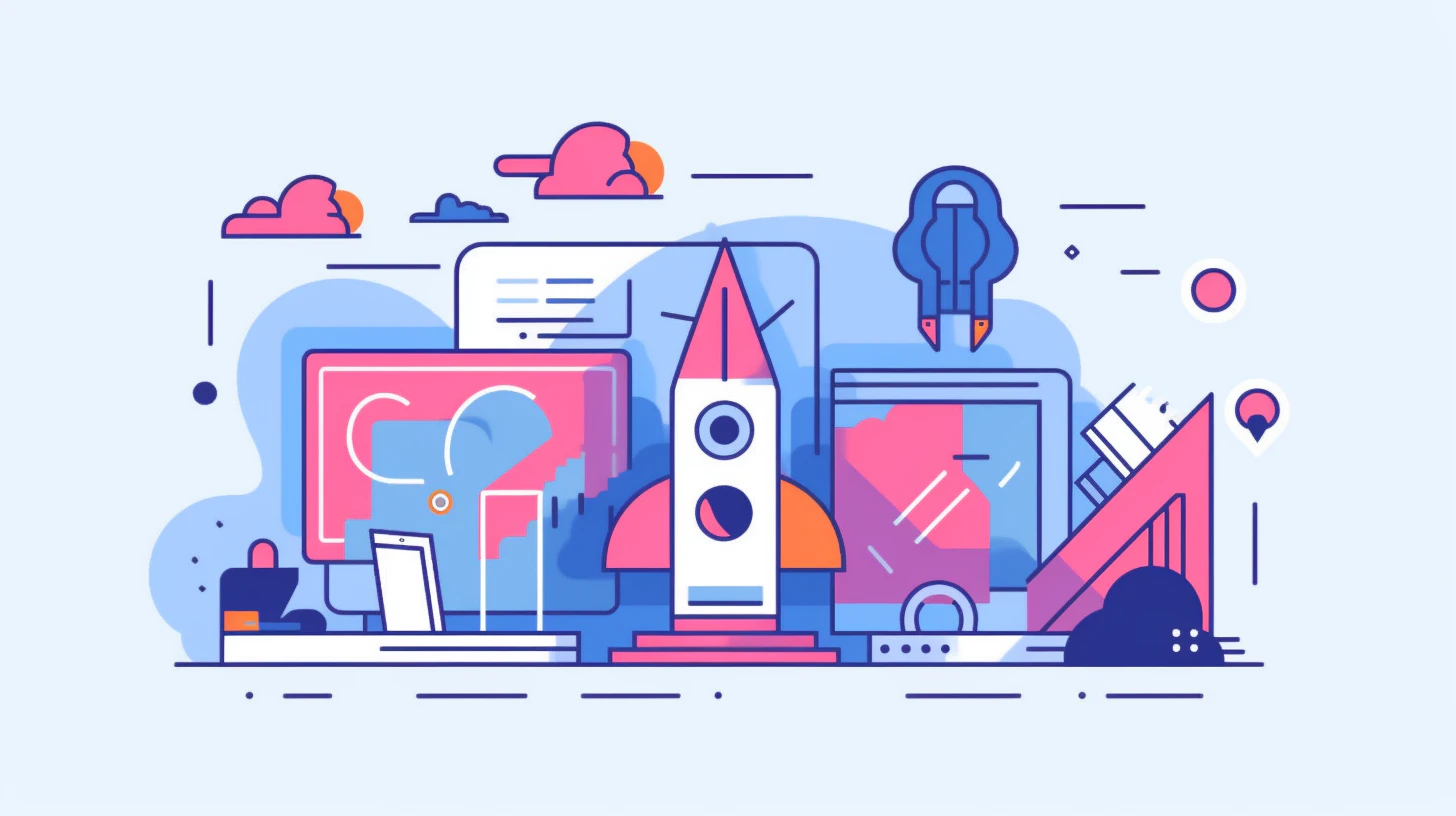How to create a Saas Product

September 5, 2022
What’s involved in creating a SaaS product?
Here’s a snapshot of what that process might look like:
- Ideation
- Design
- Development
- Launch
- Learnings and Iterations
- Go to scale!
Ideation
The ideation process is all about generating and developing ideas for your product. This includes researching your target market and understanding their needs to develop a unique selling proposition and creating a prototype.
Once you understand your target market and their needs, it’s time to start generating ideas for your product. To do this, you can use brainstorming techniques such as mind mapping and free writing. We also recommend looking for inspiration from other products on the market and your own experiences.
Once you have a list of potential ideas, it’s time to start narrowing them down. To do this, you’ll need to consider feasibility, marketability, and whether or not the idea solves a real problem. Once you’ve narrowed down your list, you can start to think about the design.
Design
After you’ve completed the ideation process, it’s time to start thinking about design. This includes everything from creating wireframes and user flows to designing the user interface and user experience.
The first step in the design process is to create wireframes. Wireframes are essentially blueprints for your product. They help you map out the structure and flow of your product, as well as how users will interact with it.
Once you have wireframes for your product, you can start thinking about the user experience. This includes things like how users will navigate through your product and what kind of emotions they should feel while using it.
The next step in the design process is to create the user interface. This is the part of your product that users will see and interact with. When designing the user interface, it’s important to keep things clean and simple. You want users to be able to find what they’re looking for quickly and easily.
Development
After you’ve completed the design process, it’s time to start thinking about development and how you’re going to bring this thing to life.
The first step in the development process is to create a prototype of your product. This will help you test out the feasibility of your product and get feedback from potential users.
Now, with feedback and guidance from your potential users, you might be ready to get into development. It’s possible to create a simple web application without any code. In fact, there are a number of online tools that make it easy to do just that. This might be something you can do yourself OR if your idea is something more unique or has a range of MVP features you can’t get from these online tools, then you’ll need someone who can write code. Deciding on what code to write, how it’s written and what ‘coding language’ is going to be something else you have to consider before pulling the trigger to code.
Launch
After you’ve completed the development process, it’s time to launch your product. Launching a SaaS product is a full-time job on its own, but with the right planning and execution, it can be done. Here is a glimpse into the process:
Start by creating a launch plan. This will outline everything from your marketing strategy to your goals for the launch. Next, choose a hosting provider. This is where your product will live on the internet - security, scalability and accessibility must be considered here. Then, start marketing your product. This can be done through a variety of channels, such as social media, email marketing, and content marketing. Finally, track your progress and analyze your results. This will help you determine what’s working and what’s not.
Learnings and Iterations
After you launch your product, you should also be prepared to Iterate. This is the process of making changes to your product based on feedback and data. It’s an important part of the product development cycle and ensures that your product is always improving.
This may include
Tracking key metrics Analyzing usage on the platform and the most important one - speaking to your first customers
Go to scale!
So, let’s assume you do get to validate your idea and customers not only want it, but they’re willing to pay for it. Now what? Well… it’s time to scale it. But where do you start? And how do you make sure that you’re scaling in the right way?
Here are a few tips for scaling your saas application:
- Continue to understand your data and metrics. They are critical when it comes to knowing if your product is still succeeding.
- Start optimizing. This can be done through a variety of means, such as A/B testing and customer segmentation.
- It’s also important to focus on your marketing efforts when scaling. After all, you need to attract more users if you want to grow your business.
- Finally, make sure you have a solid plan in place for scaling your infrastructure. This is one of the most important but often overlooked aspects of scaling a SaaS product.
If you’re looking for help creating your own SaaS product, then we should talk. We’ve spent the last decade building online products for both our customers and ourselves, and we specialise in working with startups and entrepreneurs to get their ideas off the ground quickly without sacrificing quality or breaking the bank.